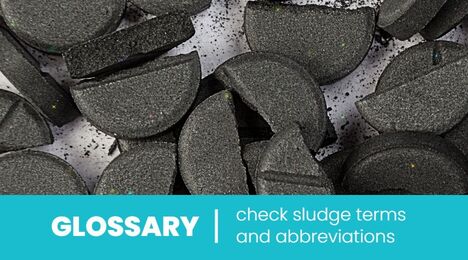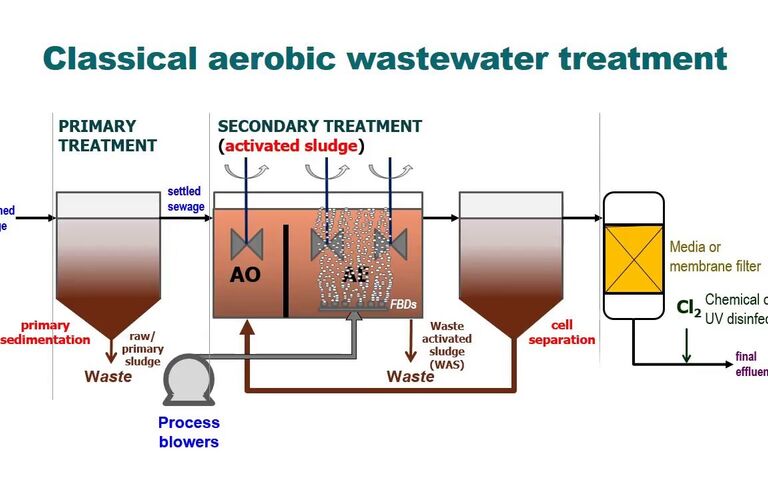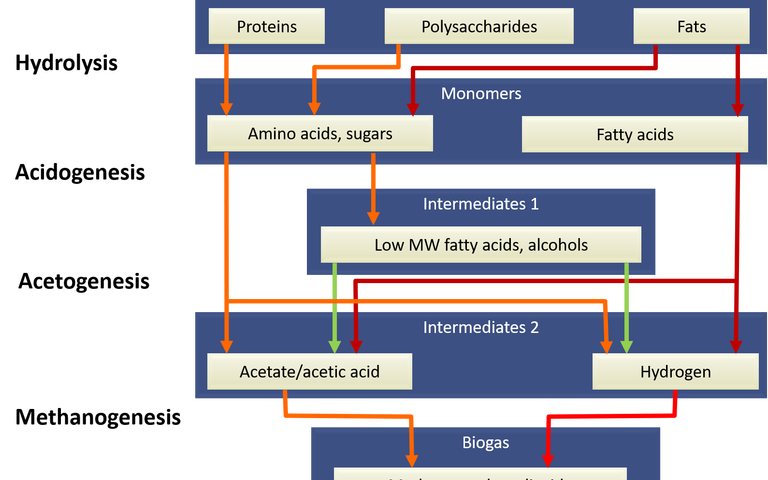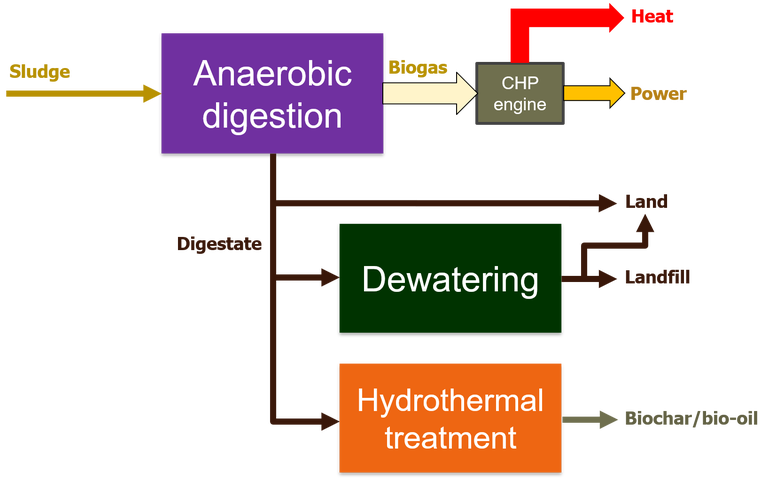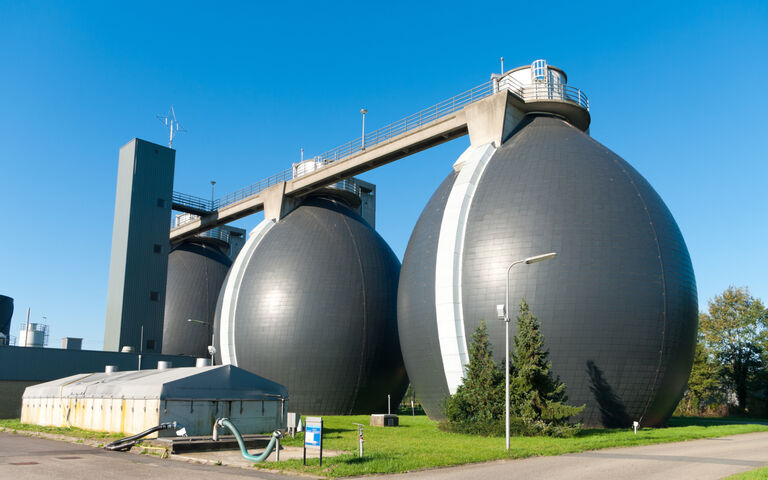Sludge treatment − composting

How sludge composting works
Composting is a type of aerobic digestion. Sewage sludge can be combined with other waste materials such as wood chip, straw or green wastes prior to composting to provide a pasteurised product. Around 20−30% of the volatile solids can be converted to carbon dioxide through composting.
Composting employs natural mesophilic and thermophilic aerobic degradation within a largely static system which is aerated by natural diffusion and is therefore low in energy demand. However, composting is a lengthy process and employs large land areas.
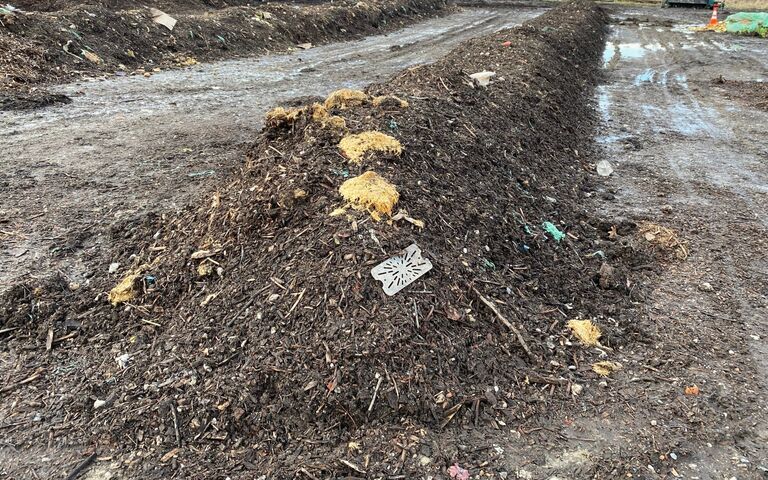
The most established method for composting is through the use of windrows. These are simple piles of material, ~2m deep and ~4m wide, which are periodically mechanically turned to ensure even distribution of the organic materials and adequate contact with air. The process temperature must be kept between 55 and 65°C and the moisture content at 35−65% for degradation to take place at a reasonable rate and for the pathogenic microorganisms to be destroyed. The process takes around six months.
The materials for combining with sludge prior to composting are categorised as either bulking agents or amendments, where:
- a bulking agent (wood chips, shredded leaves or tyres) is intended to support the structure of the sludge by increasing its porosity to encourage effective aeration, and
- an amendment (e.g. sawdust, straw, rice hulls, recycled compost) is primarily used to increase the organic content and enhance biodegradability.
Both these agents are added to the sludge at the start of the composting process, which proceeds via the following stages:
- preprocessing, where the sludge is mixed with the bulking agent(s) and amendments
- high-rate decomposition, with aeration by air pumping or mechanical turning
- recovery of the bulking agent (if largely undegraded)
- curing and storage to provide stabilisation, and
- post processing, consisting of (i) screening to remove unbiodegradable materials such metals and plastics, and/or (ii) grinding/comminution to produce a more uniform product.
The product may then be used for soil conditioning or other land applications, provided the metals content is sufficiently low.

